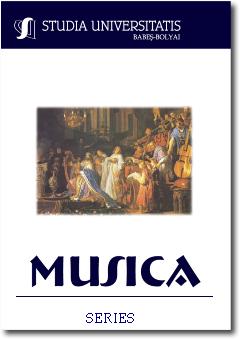AESTHETIC TRENDS AND DEVELOPMENTS IN BESSARABIAN OPERA MUSIC OF 20th CENTURY
AESTHETIC TRENDS AND DEVELOPMENTS IN BESSARABIAN OPERA MUSIC OF 20th CENTURY
Author(s): Luminiţa GuţanuSubject(s): Music
Published by: Studia Universitatis Babes-Bolyai
Keywords: music; opera; bessarabian composers; opera music of 20th century; aesthetic trends.
Summary/Abstract: The opera in Bessarabia displays a wide range of concepts, styles and techniques. Thus, the composition spectrum in Bessarabia tackles various coordinates for the structuring of aesthetic concepts. The work of Bessarabian composers (the lyric genre) convincingly illustrates the interdependence between trends, which forms a heterogeneous aesthetic musical field. The composers’ interest constantly lies in musical sources of folk origin. The musical discourse comes into being under the influence of folk melodies, which imprints a variational character on the sound developments, facilitated by the episodic repetitions of the form of rondo (D. Gherschfeld, Zlata Tkach), as well as an improvisational character (Gh. Mustea).Folklore is the groundwork underlying the formation of the lyric genre in Bessarabia. The Bessarabian composers attempt to create musical value from the very substance of Romanian folklore. In addition to the „folkloric source“and/or the phonetic basis of folklore, these composers’ language also encompasses heterogeneous elements. Essentially, opera in Bessarabia presents the attributes of a heterogeneous, mixed language, integrating the traditional resources of Romanian folklore into the dynamic reality of European music aesthetics, but also retaining important influences from the Russian epic opera music (M. Mussorgsky, N. Rimsky-Korsakov) as well as from the former Soviet music (D. Shostakovich, S. Prokofiev).
Journal: Studia Universitatis Babes-Bolyai - Musica
- Issue Year: 56/2011
- Issue No: 1
- Page Range: 59-66
- Page Count: 8
- Language: English

